This is the first in a series of review posts about an inexpensive Chinese 35 mm lens for Sony E-mount cameras. The best way to see the rest of them is to scroll down to the bottom of this post — below the comments — and you’ll find pingback links to the subsequent posts. Click on them to navigate to each one in turn.
Alerted by aa DPR thread, I saw it on E-bay: a listing for a brand new 35mm f/2 FE lens for $167, including shipping. The brand was Viltrox, and it was made in China. Interested in the quality of these really low end Chinese lenses, I sprung for one.
Three weeks later, I had it in my hand. Here’s the unboxing:
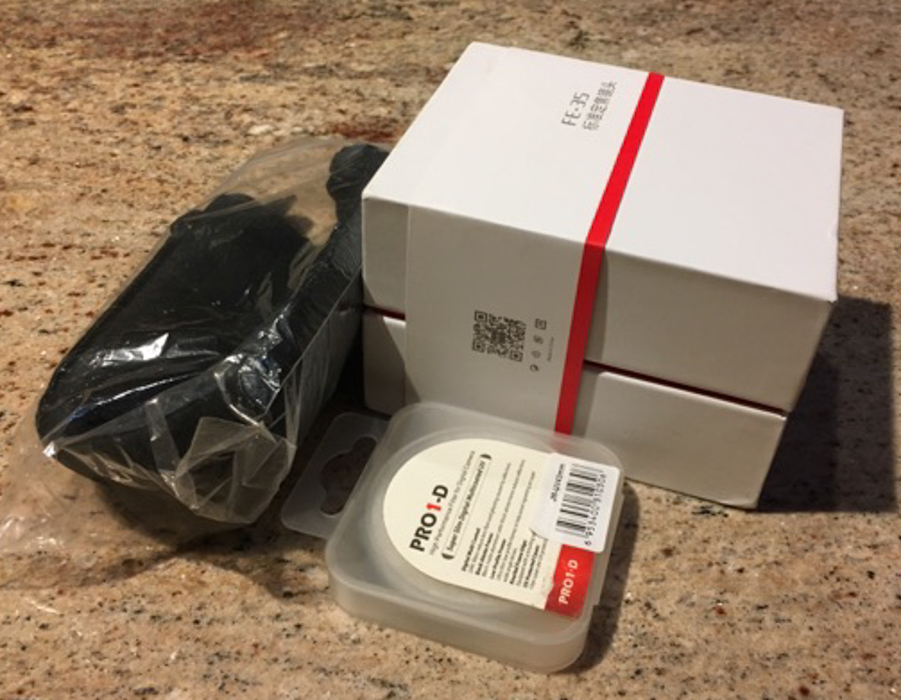
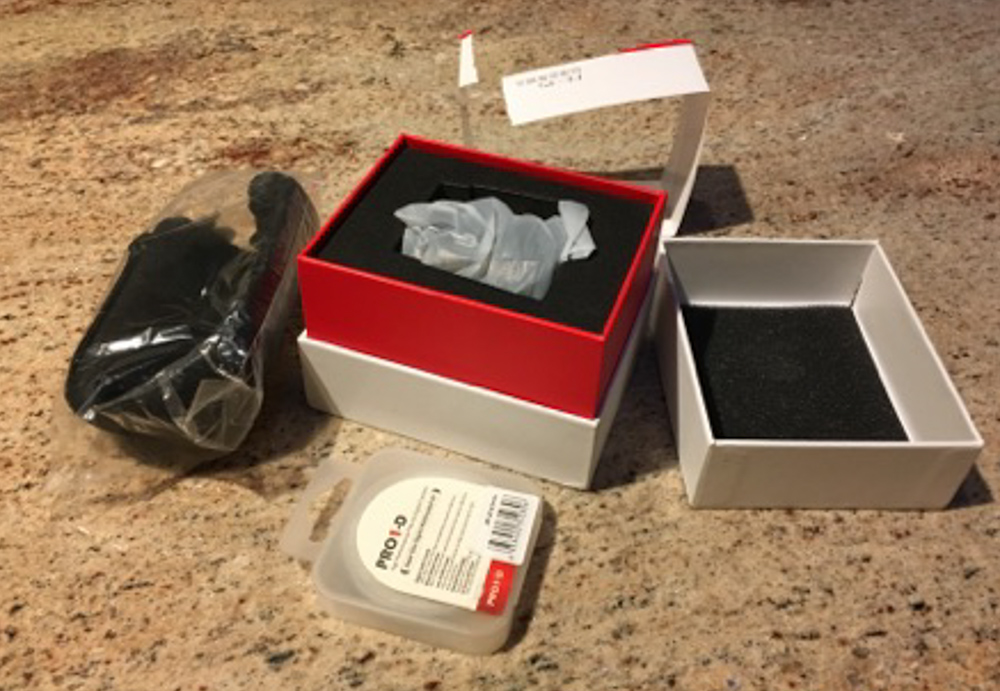
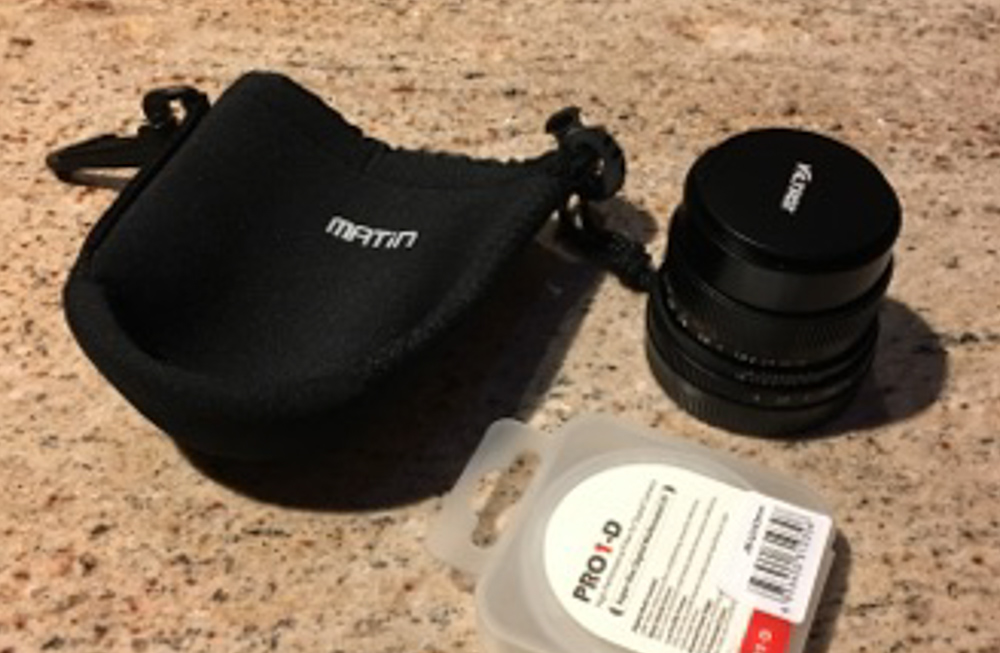
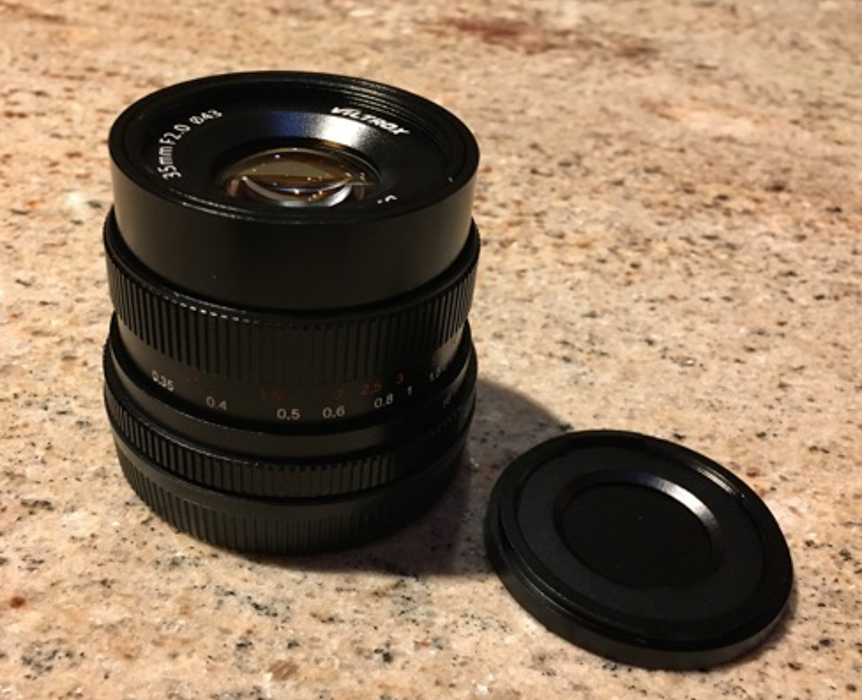
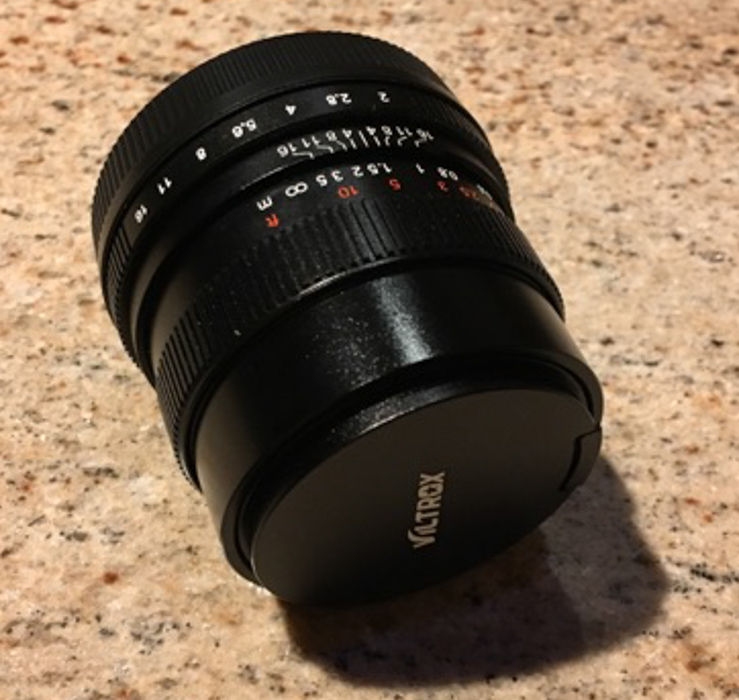
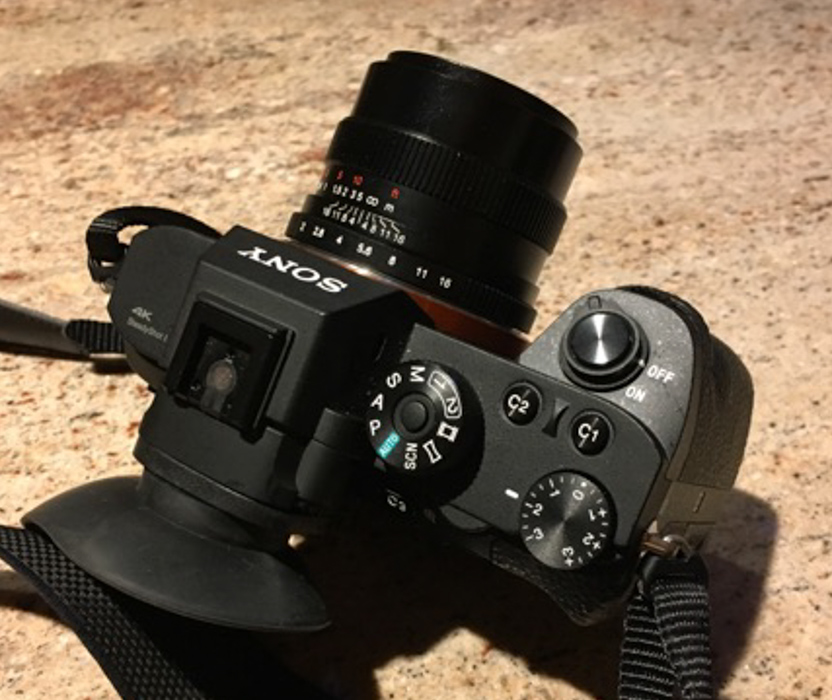
Of course, the lens is manual focus only. It does not send the f-stop to the camera for inclusion in the EXIF field. In fact, it sends no information at all. There are nice aperture click stops, but only for full stop changes. The focusing helicoid turns smoothly.
A promising beginning.
On the Sony a7RII, I aimed it at one of my standard test scenes on a gloomy day,
In the center, enlarged to 200% in Lightroom, with the aperture set to f/2:

A little purple fringing, which in this case is indicative of Longitudinal Chromatic Aberration (LoCA)
I needed something to compare it to. I picked my best 35 mm f/2 lens, which is permanently attached to a Sony RX-1. That camera has 24 MP to the a7RII’s 42 MP, so I compensated in Lr to retain the same field of view. That and the RX1’s AA filter conspire to put the Sony lens at a disadvantage.
In the center at f/2 with the RX1:
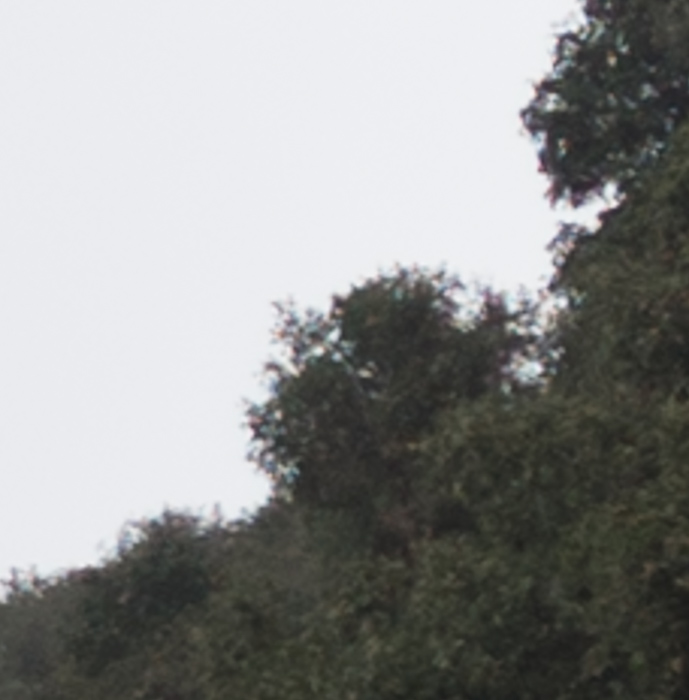
The wonderful Sony lens is a bit blurrier, but freer of LoCA. Might this bargain lens be a winner?
Let’s look at the upper right corner:
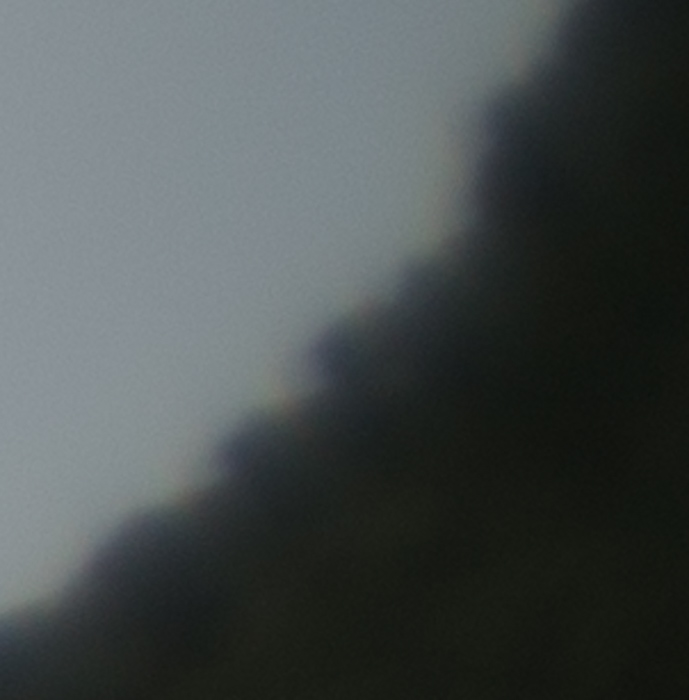
Not so good. Awful, in fact. How does the RX1 do there?

There are obvious sharpness differences, but they appear to be too great to be due to just a crappy lens design. I’m suspecting field curvature on the Viltrox. In addition, note that the Viltrox has a lot of corner falloff wide open, and the Sony RX1 lens does not.
If we focus the Viltrox on the upper right corner, the distance scale reads 10 feet. That is an indication of extreme field curvature. Let’s look at the upper right corner in that case:
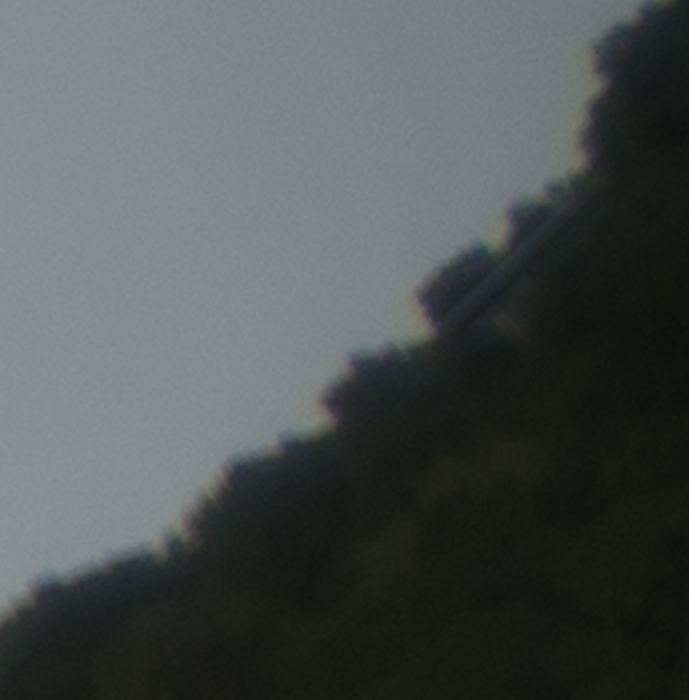
Well, it’s not up to the quality of the Sony, even when the Sony is focused in the center, but it’s not sickeningly awful any more.
Leaving the focus there, let’s look at the opposite corner:
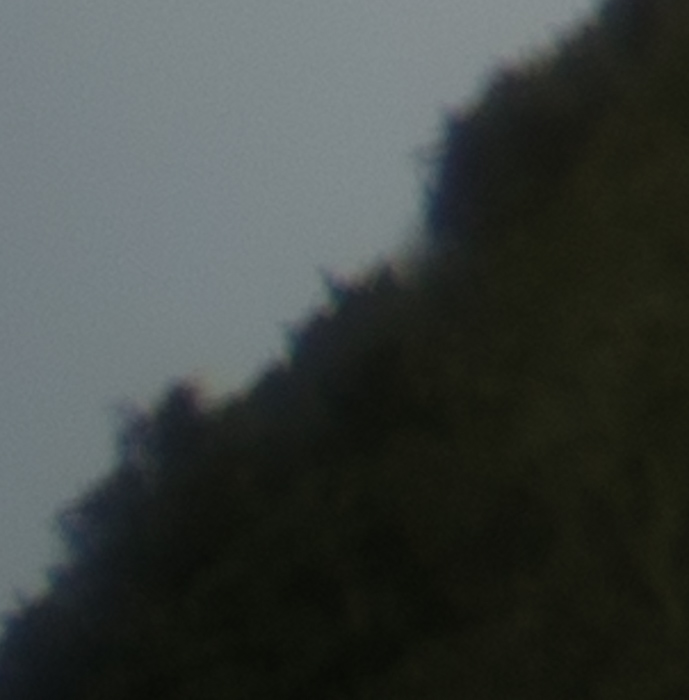
The sharpness is about the same, indicating that the Viltrox lens is centered and free of tilt, if the other two corners work the same way, which they do.
There will be more tomorrow, but for now it looks like we have an unbelievably cheap, well constructed and assembled lens that has good center sharpness, fair to middling corner sharpness, and a large amount of field curvature. That and moderately bad LoCA, and a large amount of corner falloff.
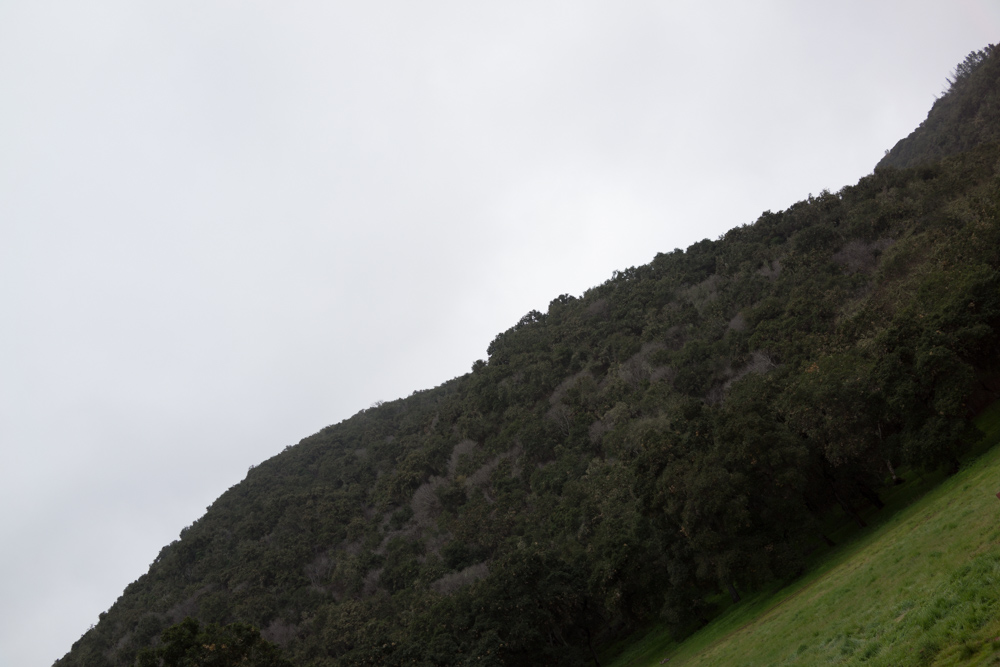
Interesting test, thank you for taking the time. It would be nice to have a cheap MF 35 without resorting to cumbersome adapters, so I’m going keep an eye out for this one on Fleabay.